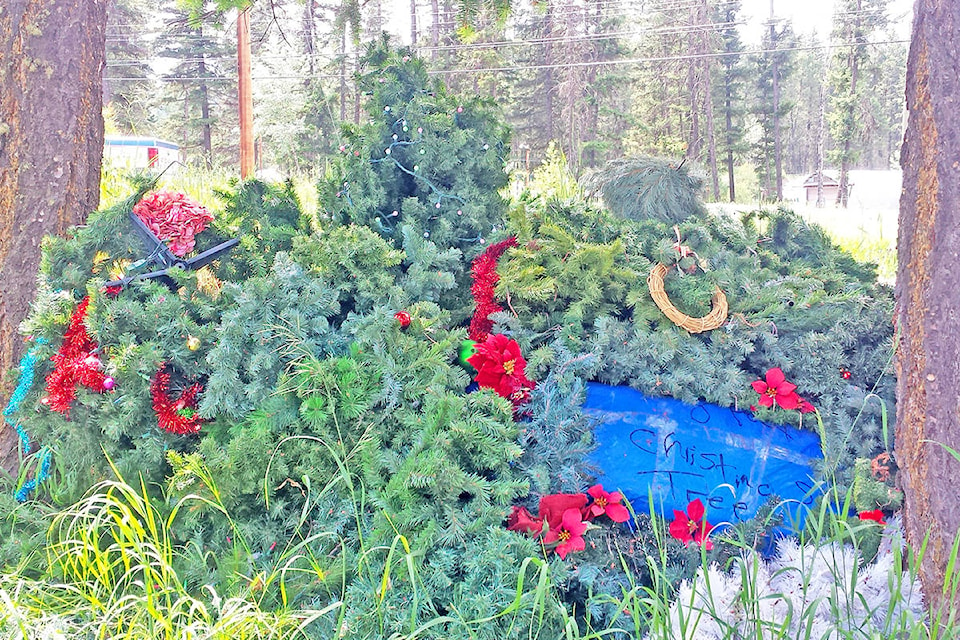Oliver Berger
Special to the Tribune/Advisor
Perhaps I should get a fake Christmas tree this year?
Every year this real tree dies. Every year it sheds needles all over my living room. It is cumbersome to go get and move around, plus I have to redecorate it every year. Tough times.
Get an artificial Christmas tree, they said. Excellent idea! The tree comes decorated for life, folds into a handy little cardboard box, and those needles will not be all over my space anymore.
To boot, I don’t have to go harvest one. Easy, right?
Let me tell you a few things about artificial Christmas trees that I have learned over the past while.
Artificial trees consist of metals, various plastics, wiring, glass, paints, polyvinyl chloride (PVC), and sometimes even lead. Having such varied components makes re-purposing or recycling these trees once they perish, extremely difficult. These festive trees become landfill.
Related: CCCS launches eco-business coaching program
A lot of the artificial tree’s components are also toxic. PVC dioxins have been known to cause health issues in humans and animals. We absorb them into our fatty tissue when they are released into the air or water around us. This is usually the ‘needles’ part of the tree.
I have been noticing that these needles shed just as fabulously as the real thing. Most fake trees are made in China, where work regulations and safety standards are a little different. Grinding plastics, processing fossil fuels and injecting chemicals to construct fake greenery are all part of the process.
Once the products exit the assembly line they now travel half way around the world just to be sold to our living rooms.
There is a heavy footprint in purchasing an artificial tree. So how many years do I have to use, pack, and store this thing to make it all balance out? Well the numbers vary, however on average you need to use your fake tree for about 13-plus years for it to be carbon neutral. Most do not make it past five.
We are so lucky to live in an area surrounded by thousands and thousands of trees! It is actually kind of surprising we need to put one inside our homes for ourselves when we have so many around us outside to enjoy every day.
I am going real.
I found a beautiful patch of trees underneath a hydro line along a service road. Perfect. These will eventually get mulched up anyway. This is where my Christmas trees for the next few years will come from and I can walk here to harvest them.
When the holidays are over I can 100 per cent compost my tree right back into nature, without that crazy tinsel of course.
The Christmas tree industry itself is actually beautifully sustainable.
Related: Trash art project sees students reclaim wood from dump
Only harvesting about 10 per cent of their trees each year, these farms continuously provide clean air and water, important habitat for wildlife, and erosion control.
We have many clubs and non-profits here in the Cariboo selling real trees to raise money, so we can ditch the plastic and support a local organization.
P.S. If you do go and harvest your own tree from our forests, don’t forget to grab your permit online or at Front Counter BC, don’t worry it is free: https://www2.gov.bc.ca/gov/content/industry/natural-resource-use/natural-resource-permits/christmas-tree-permits
Conservation Tip of the Month: The most precious gift to give anyone is your time.
Oliver Berger is the Chief Green Officer with the Cariboo Chilcotin Conservation Society.
Do you have a comment about this story? email:
editor@wltribune.com
Like us on Facebook and follow us on Twitter.

